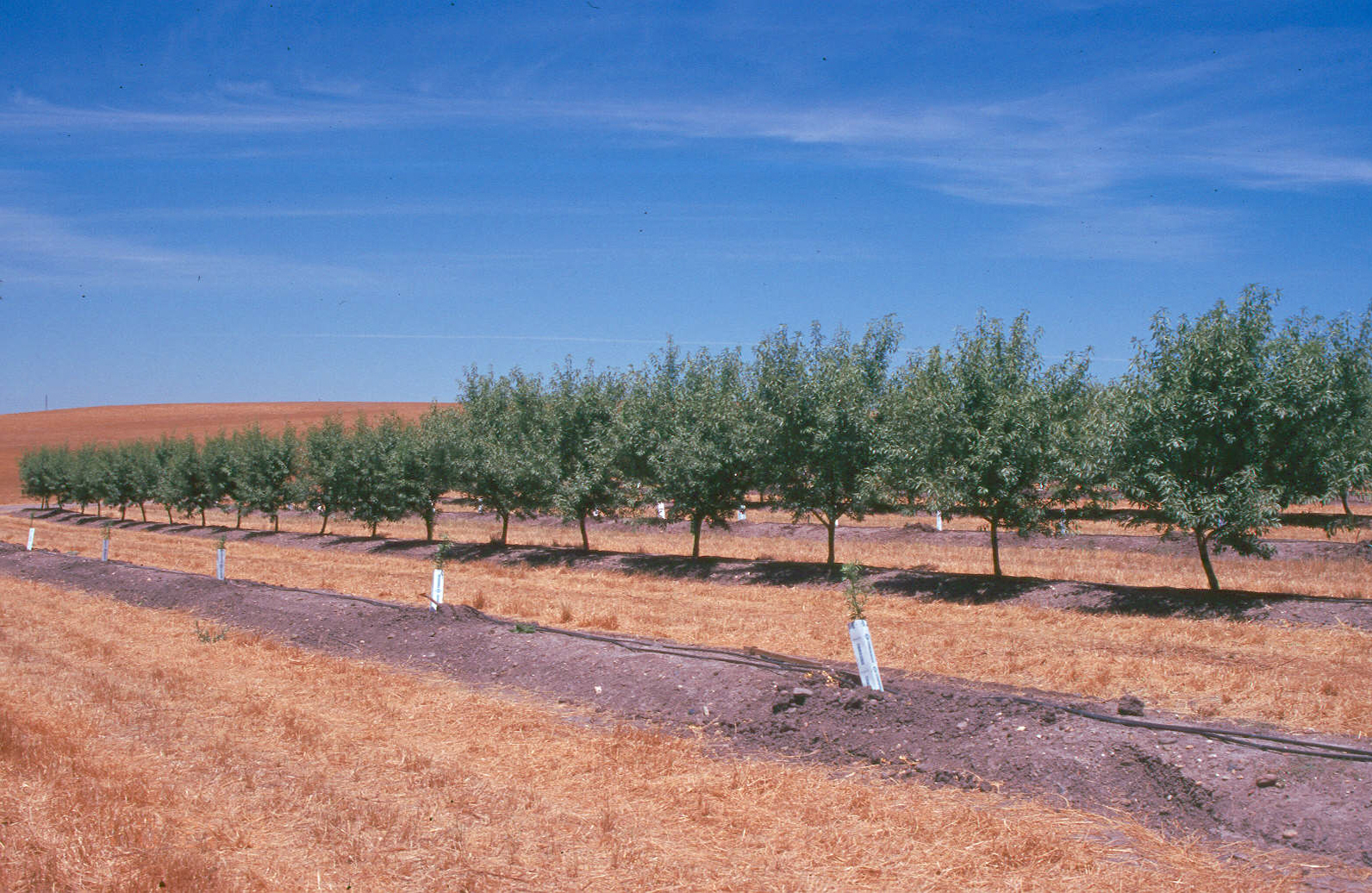
When it comes to pruning almond trees, Sid LaGrande and his brothers, who farm near Williams, Calif., have taken a more minimalistic approach compared to what they did even 15 years ago.
“Practices change,” LaGrande said. They have learned that the old system of pruning every year actually reduced yields rather than enhance them.
“That was the problem,” he said. “You were cutting off your fruiting wood. If you’re taking out your fruiting wood, then you’re going to reduce yield.”
But change can be hard, especially when it’s been engrained in your mind from past generations. Roger Duncan, UCCE farm advisor for Stanislaus County, admitted he was one of those who believed what he had heard about why annual pruning was necessary.
“You have to prune out the branches in the middle of the tree to prevent shade-out and keep the lower wood productive,” he said. “You have to prune every year so new fruit wood will grow. You have to prune every year or the trees will get too tall. If you don’t prune, yields will crash within a few years.”
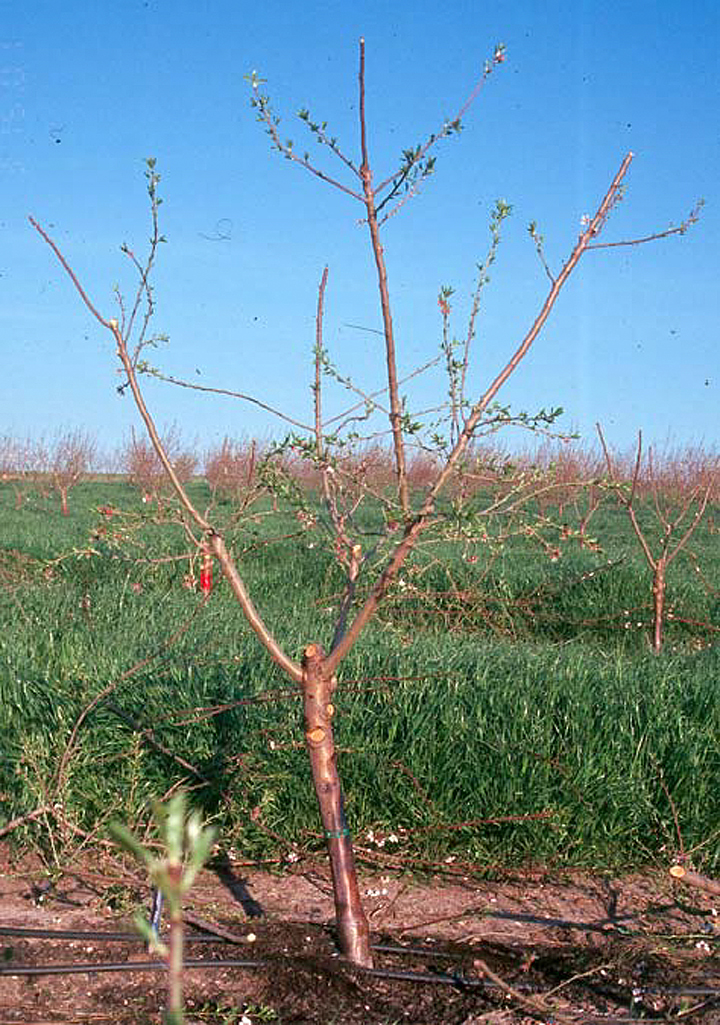
And the list goes on.
After seeing the results of trial after trial conducted in different locations throughout the state, Duncan changed his mind.
“It took me a long time to truly believe it,” he said. “Now, to me, it’s not really a theory any more. It’s been done so many different ways and in so many different locations in California and other almond growing areas of the world. Fifty years of pruning trials show you don’t make almond trees more productive by pruning them. We keep coming up with different ways to try to manage the canopy to make almonds more productive, but so far it hasn’t worked. The almond tree is pretty good at growing optimally and maximizing production without us tinkering with them.”
In fact, the trials showed growers who pruned annually lost money not only from reduced yields but also from increased labor costs.
“Pruning doesn’t improve yield,” Duncan said. “It didn’t improve yield in the short term and it doesn’t improve it in the long term. But, to be clear, there are still reasons you need to prune, and every orchard is different.”
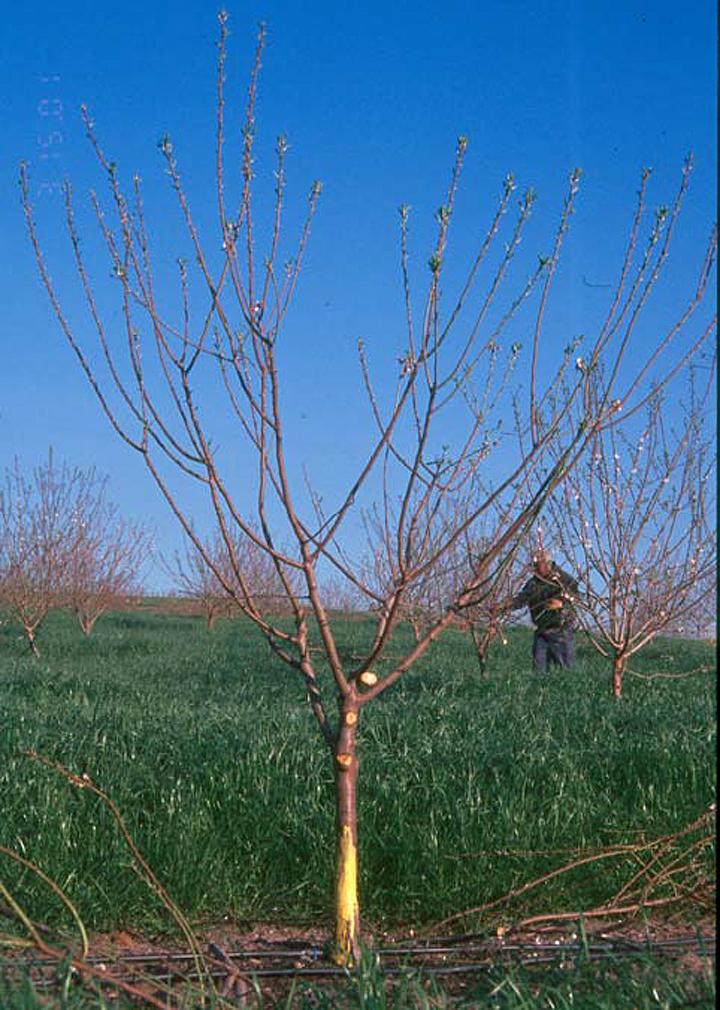
The Start of the Evolution
In the trials, researchers considered minimally pruned as those trees where three scaffold branches were selected the first year and the trees pruned normally the second year after planting. Then they didn’t see a pruning tool or chain saw unless a branch broke, was diseased or had to be removed for safety reasons or to allow orchard traffic.
John Edstrom, a now-retired UCCE Colusa County farm advisor, began the discussions with a field trial at the Nickels Soils Lab near Arbuckle that compared pruned to unpruned trees. The orchard was planted with 7’ x 22’ spacing on Class III soil in 1979.
The last year before they were removed, the unpruned trees yielded 2,307 pounds per acre compared to 2,136 pounds per acre for the pruned trees. Over the orchard’s 21-year lifespan, the unpruned trees produced 35,082 pounds per acre compared to 34,176 pounds per acre for trees pruned annually. In other words, the grower would have had to pay workers to prune the trees on top of losing 906 pounds of yield.
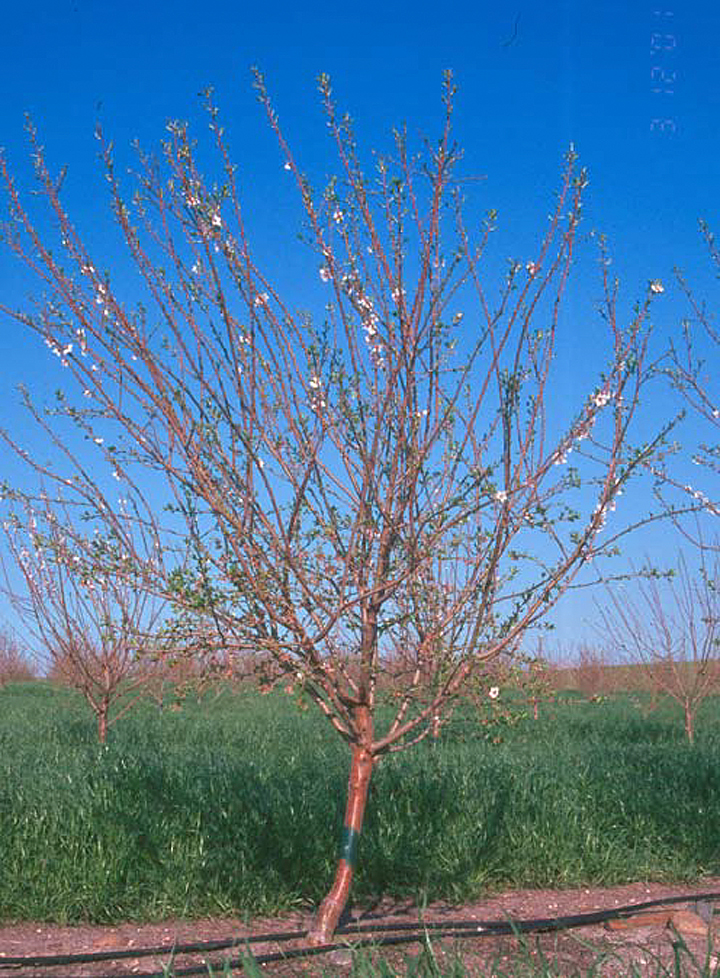
Going Local
Even after seeing those results, Duncan said he wasn’t convinced.
“Those are Sacramento Valley conditions; that’s not what we have here,” he said. “What works in one spot doesn’t necessarily mean it will work in another spot.”
That’s why Duncan, along with Mario Viveros, now-retired UCCE farm advisor in Kern County, began long-term orchard trials that compared various pruning treatments in their respective regions.
Viveros’ trial included unpruned trees, annual pruning, pruning in alternate years, mechanical topping and hedging annually, topping and hedging in alternate years and mechanical and hand pruning annually. The orchard, planted to a 24’ x 21’ spacing, was on Wasco sandy loam soil. The varieties were Nonpareil, Carmel and Monterey.
In the 11-year-old trial, cumulative Nonpareil yields were 2,291 pounds per acre more in the unpruned trees than trees that were pruned annually. Carmel yields were 1,879 pounds per acre higher in the unpruned trees.
Mechanical topping and hedging, whether done annually or every other year, also did not increase yields. Yields were lowest in trees that were pruned by hand and mechanically hedged each year.
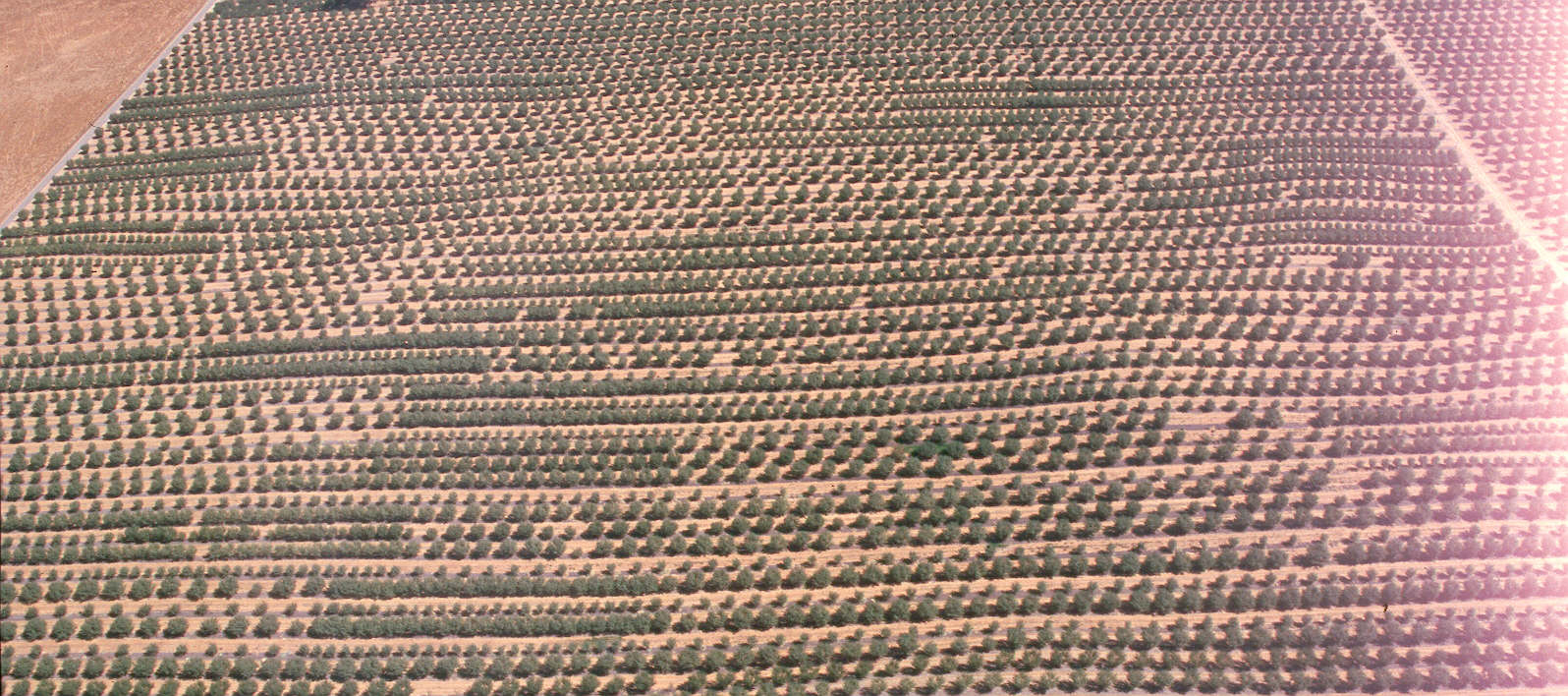
Stanislaus County Trial
Duncan’s initial Stanislaus County trial involved a Nonpareil-Carmel orchard and four pruning strategies: 1) standard initial training to three scaffolds and annual pruning thereafter; 2) standard training for two years and no pruning thereafter; 3) minimal training and pruning; and 4) completely untrained and unpruned for the duration of the experiment. To test the theory that closely planted trees might need more pruning than trees planted at wider spacings, Duncan tested the pruning strategies at four tree spacings: 22’ x 22’, 18’ x 22’, 14’ x 22’ and even 10’ x 22’.
In this trial, minimal training and pruning involved tipping the shoots twice during the first growing season to stimulate secondary branching and establish a bushy tree. At the first dormant pruning, four to six scaffolds were retained to maintain a full canopy. Pruners are allowed only three cuts per tree each dormant season to maintain a minimally open canopy.
Through 19 years, annual pruning resulted in significant net income losses in both the Nonpareil and Carmel. Annual pruning reduced cumulative Nonpareil yields by up to 900 pounds per acre compared to trees trained for two years and left unpruned for 17 years or trees that went untrained and unpruned for the 19-year duration of the trial.
Annually pruned Carmel trees yielded about 4,400 pounds per acre less than unpruned trees over 19 years.
Combined, the yield loss and estimated $150-per-acre per-year pruning costs would have reduced net income by more than $9,000 per acre over the 19-year trial, considering the high price of almonds during that time.
The ‘Headache Factor’
What the field trials’ yield numbers don’t show is what Duncan referred to as the “headache factor.”
Trees that were untrained or trained to multiple scaffolds were more susceptible to scaffold failure and low limbs growing in the way of equipment, especially with wider tree spacings. The wider that trees were planted, the more training and follow-up care was necessary. Trees planted 10 feet apart stayed much smaller, rarely had scaffold breakage and needed the least training and pruning throughout the 19-year experiment.
“Untrained trees were more of a headache and needed more follow-up care through the years,” Duncan said. “That doesn’t always get shown in the data when you look strictly at yield averages.”
He said a reasonable compromise would be selecting three or more good scaffolds and training the tree for two years before letting it go. In his trials, Duncan said that strategy reduced scaffold breakage problems, did not create an overly dense tree and resulted in a tree that rarely needed pruning for safety reasons.
A Slight Twist
LaGrande said they select scaffolds and shape trees the first two years, then do a light touch-up in year three and four before walking away.
“If they start to overlap, then we come in with a buzz saw to open up the center,” he said of hedging.
In the past, they’d prune the trees for two years, then take a two-year break to allow them to come into production. During years five, six and seven, they’d return to pruning. What they found is the inner branches grew too large and were a pain to remove.
By shaping the trees when they were young, LaGrande said they also learned the cuts were easier and they weren’t losing yield by removing fruiting wood.
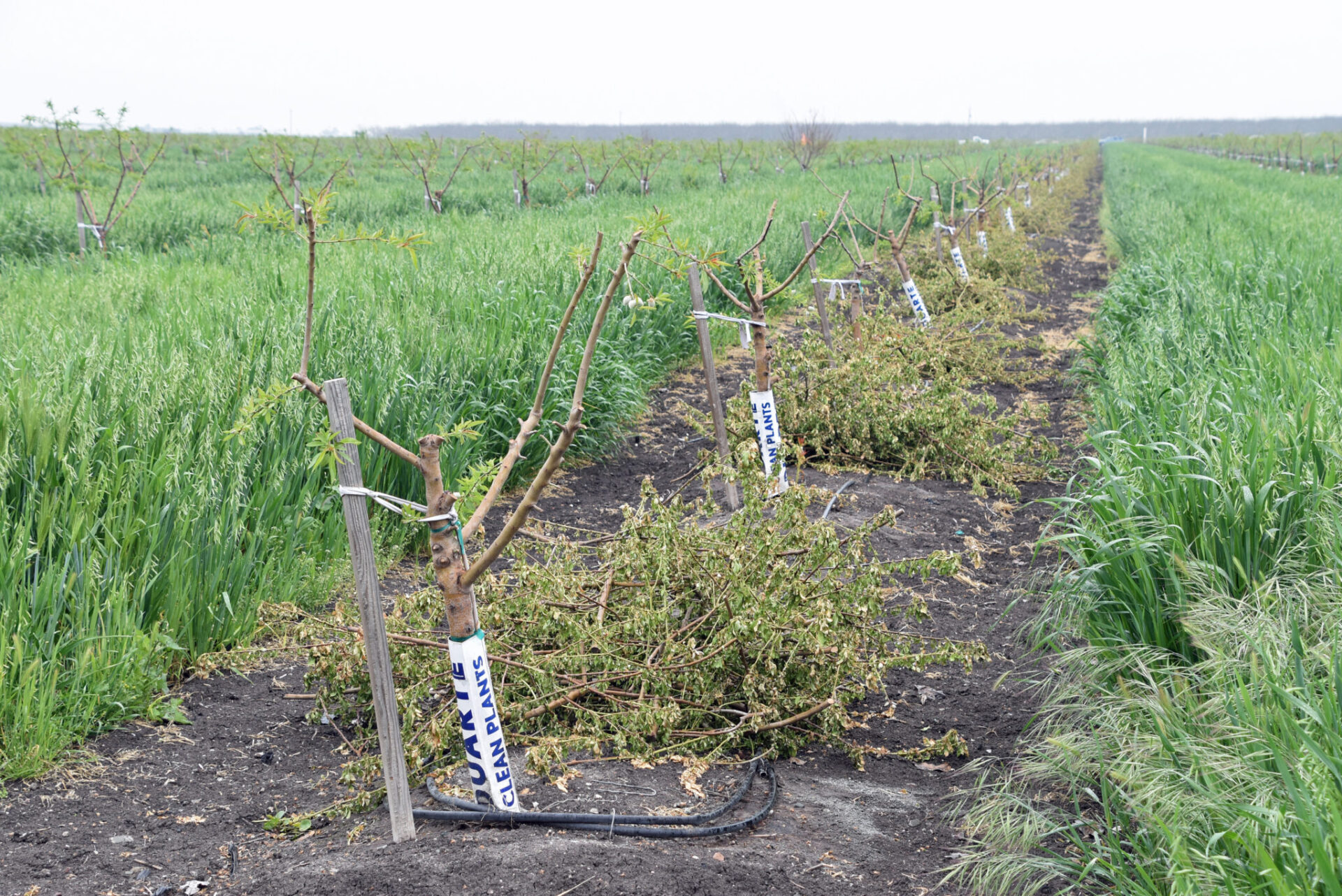
The Truth About Topping
In 2014, Duncan began a trial that compared mechanical topping to untopped trees in a newly planted Nonpareil-Monterey orchard. Topped and untopped trees were subjected to various levels of initial scaffold selection and hand pruning. After the first year of training, the trees were minimally pruned thereafter. A completely untrained treatment served as a check.
Duncan said some growers believe that topping will help reduce tree lean, particularly in orchards along the windy Westside. But in his trial planted in the western part of Stanislaus County, that wasn’t the case.
“Most of the leaning started during the first growing season before there’s any training or pruning done,” he said. Topping at the end of the first season did not result in straighter trees in this trial. “It may be more beneficial to make thinning cuts by hand earlier in the season if the goal is to reduce wind resistance.”
Other growers advocate topping as a way to manage tree height, creating shorter, bushier and more productive trees. That wasn’t the case in this trial either.
“You’re pruning off your most productive wood, which is at the top,” Duncan said. “You’re saving your less productive wood, which is at the bottom, and it just doesn’t seem to work.”
Although topping reduced tree height initially in the trial, topped trees were just as tall as untopped trees by the end of the next growing season.
Topping also resulted in vigorous shoot regrowth, creating a “crows nest” effect where the cuts occurred. Whether this will lead to more rapid shade-out of the lower canopy is unknown.
During the six years of the trial, Duncan said cumulative yields of topped Nonpareil trees, with or without follow-up scaffold selection by hand, were similar to trees conventionally trained by hand.
But mechanical topping reduced Monterey yields, especially in trees that had follow-up scaffold selection by hand. As in every other pruning trial, the best yields tended to come from the completely unpruned trees.















